Abstract
As part of a WHO programme to evaluate possible substitutes for the chlorinated hydrocarbons to which anopheline mosquitos in many countries have become resistant, two organophosphorus insecticides, malathion and Baytex, were tested as residual sprays on various types of surface against Anopheles gambiae adults in experimental huts at Magugu in Tanganyika. The long-lasting toxicity of both insecticides on relatively impervious surfaces was confirmed, but—as is the case with the chlorinated hydrocarbons—shorter persistence was obtained on sorptive surfaces. As most of the mosquitos rested on the roof, its surface was of much greater importance than the wall surface in determining kill; trials with naturally entering mosquitos indicated that where the roof was of grass malathion was to be preferred to Baytex. Observations confirmed that control huts attracted far more mosquitos than the treated huts and that the insecticide vapour apparently masked the human odour.
Full text
PDF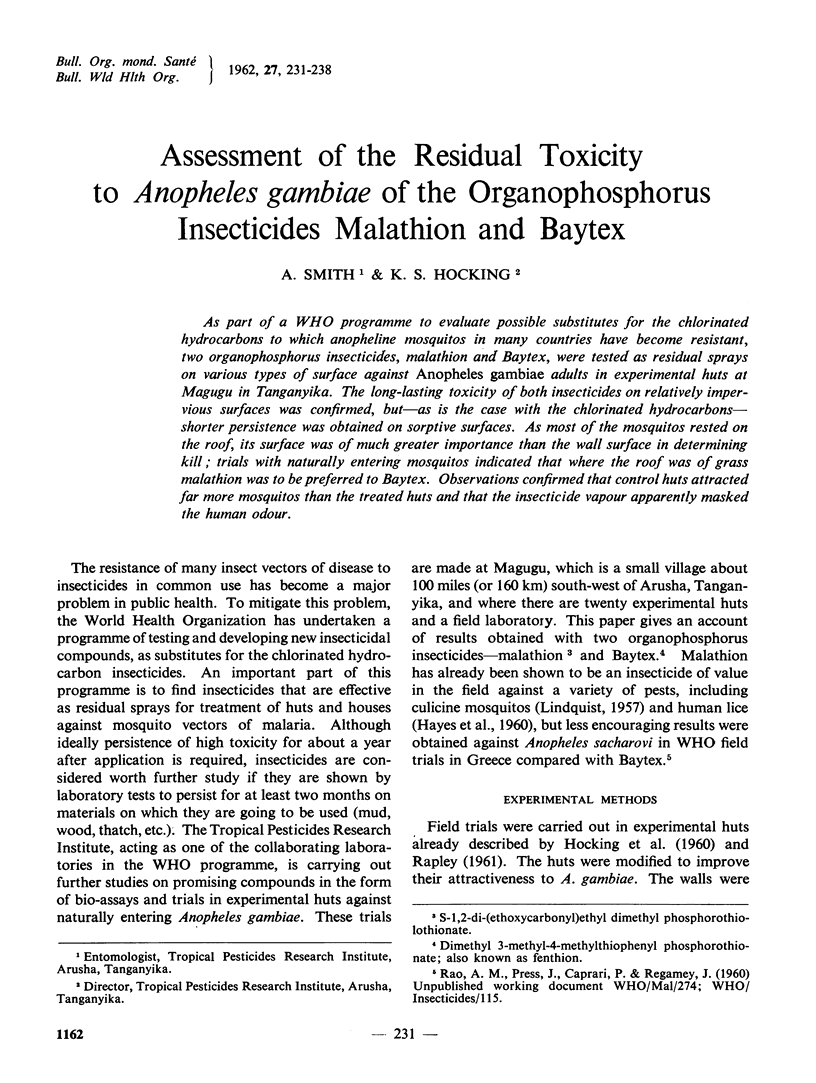
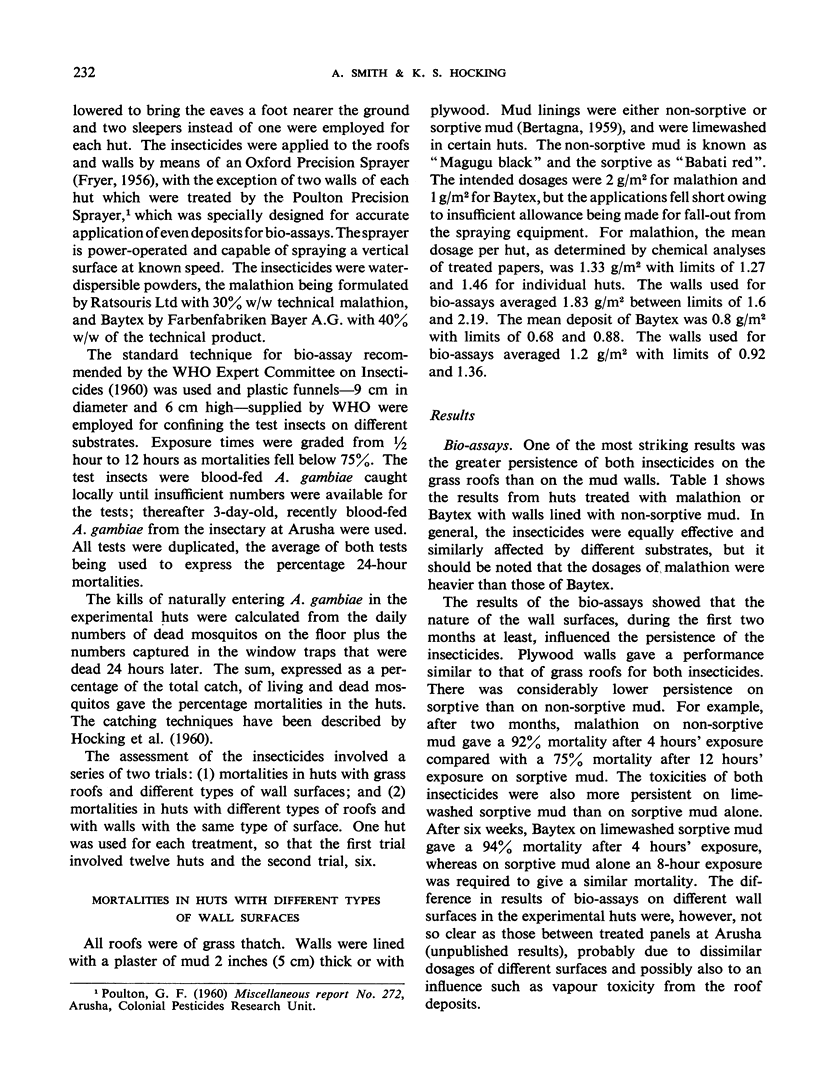
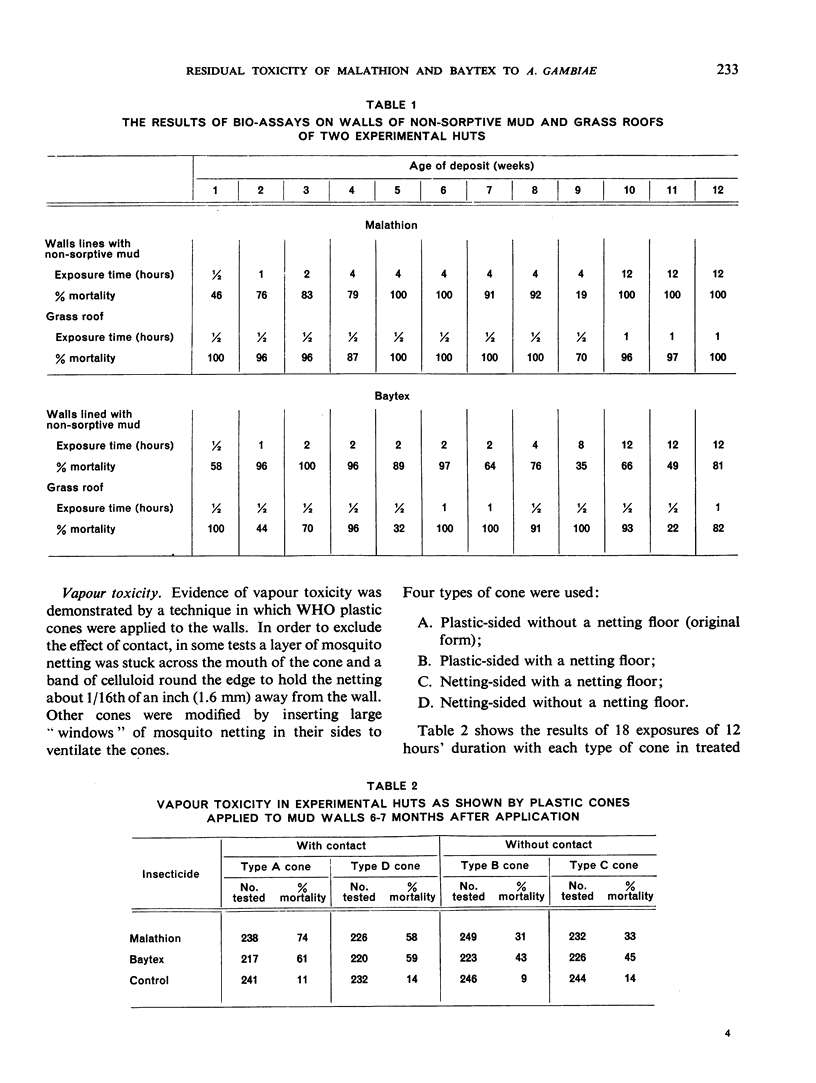
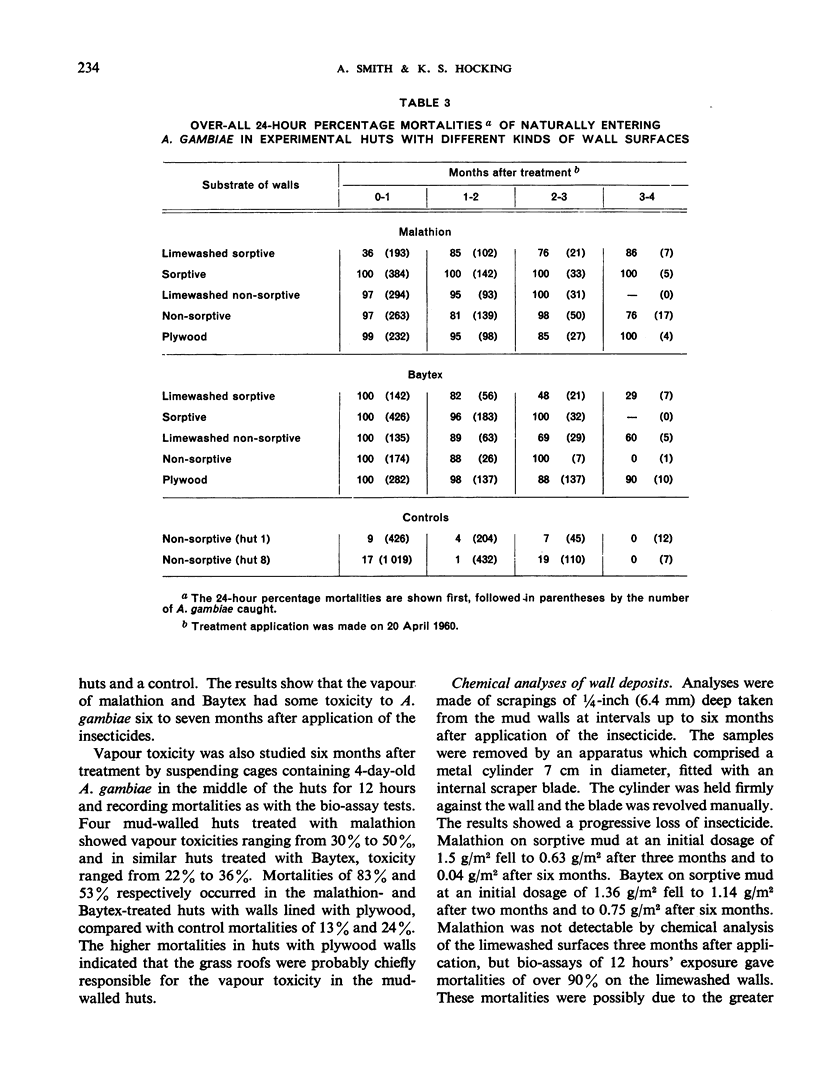
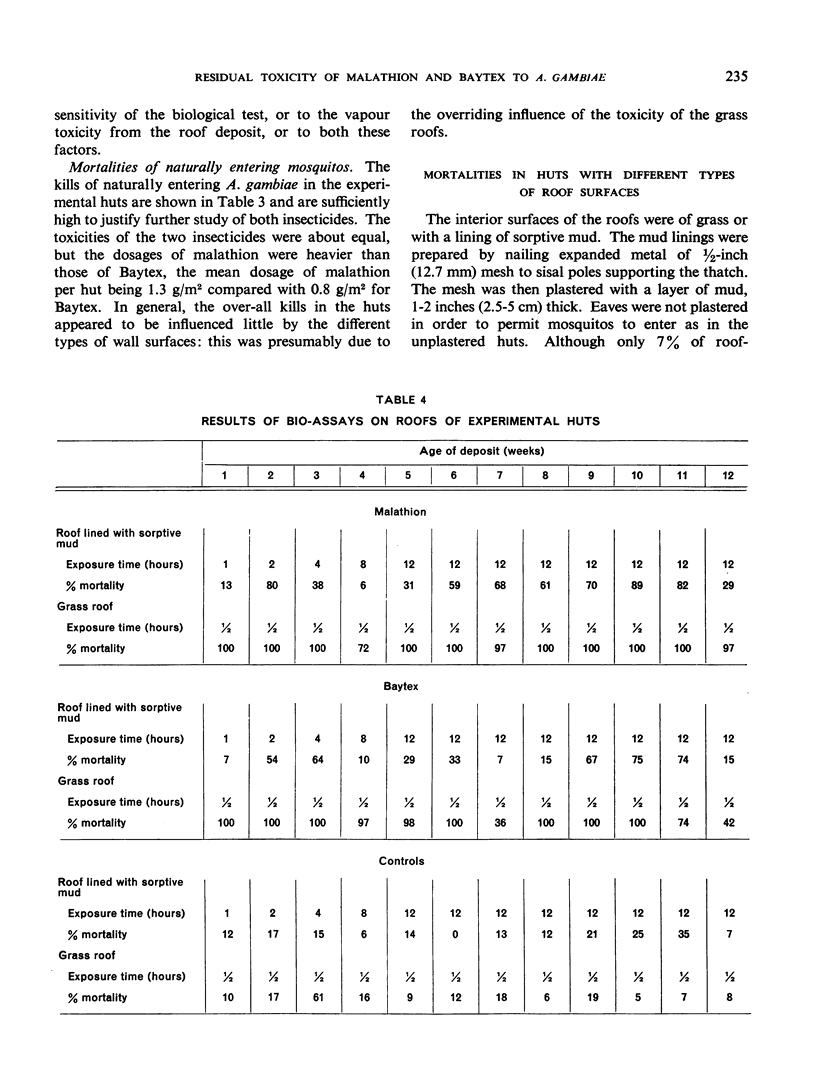
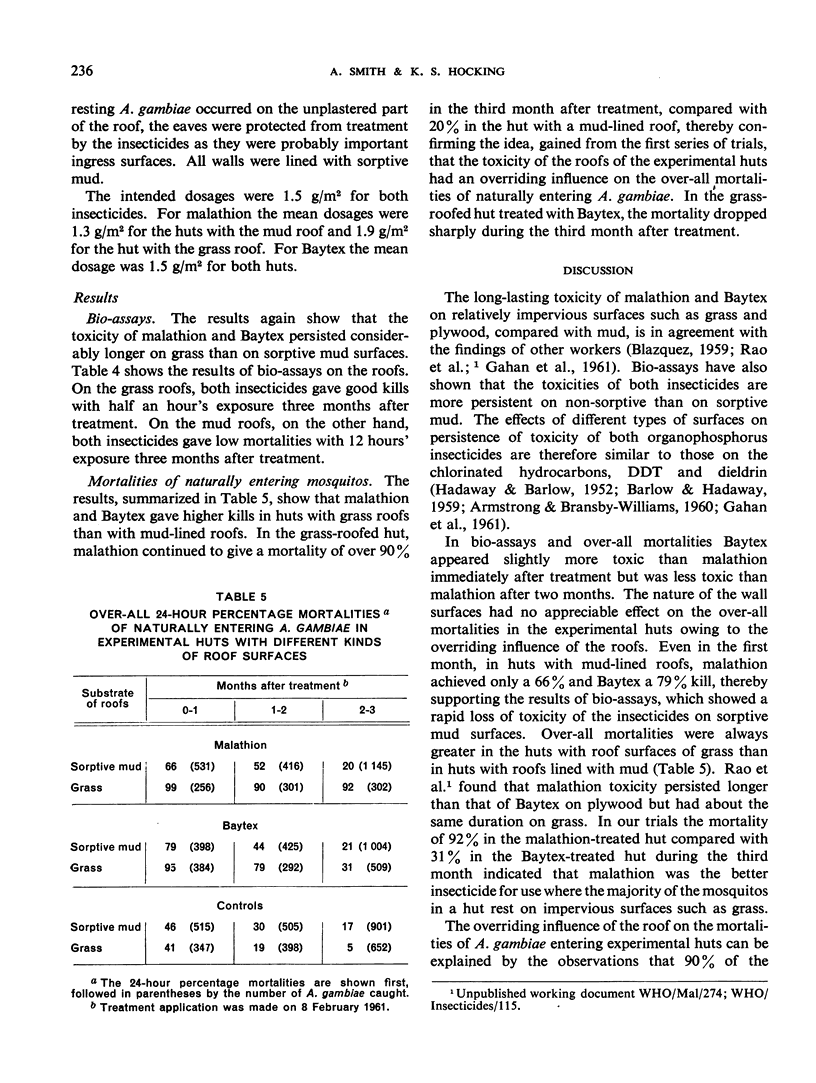
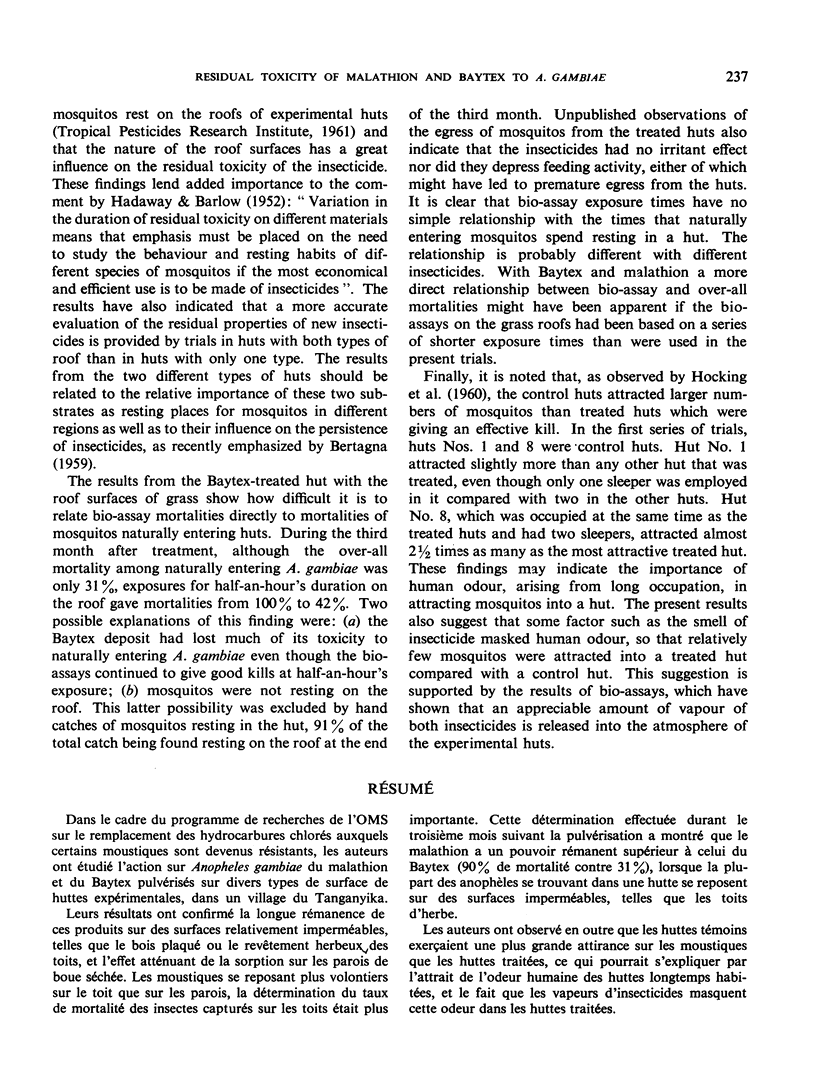
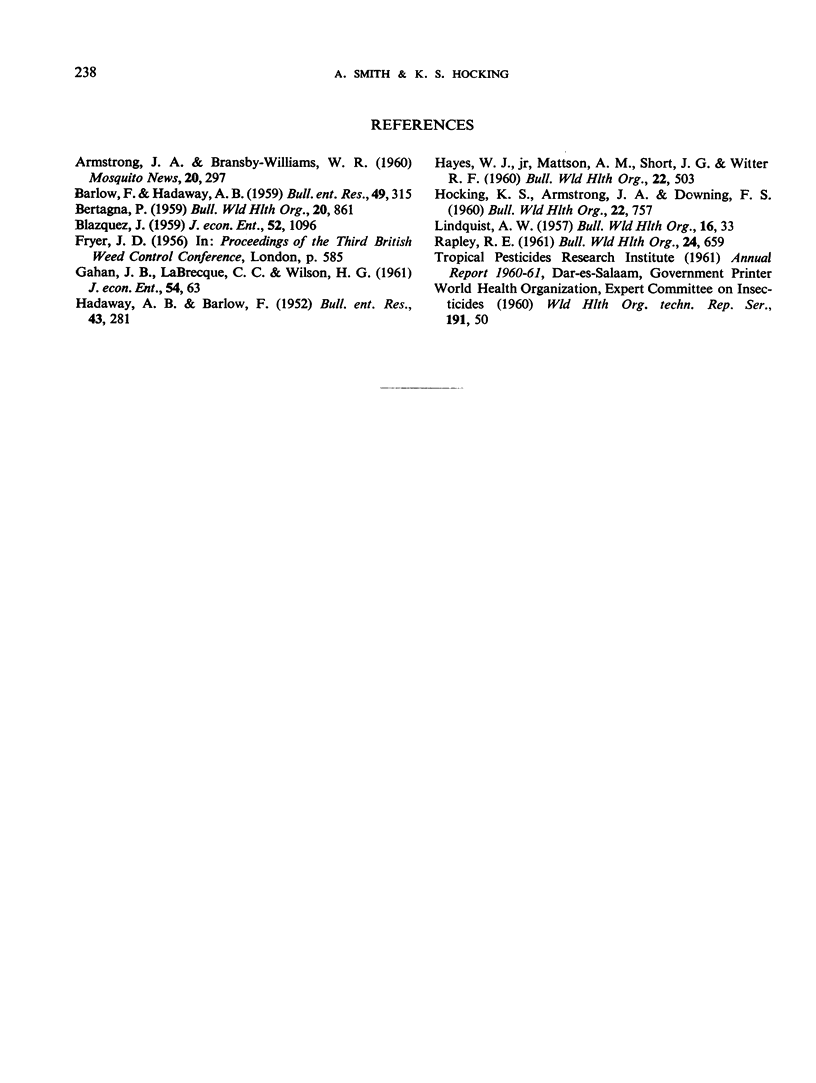
Selected References
These references are in PubMed. This may not be the complete list of references from this article.
- BERTAGNA P. Residual insecticides and the problem of sorption. Bull World Health Organ. 1959;20:861–889. [PMC free article] [PubMed] [Google Scholar]
- HAYES W. J., Jr, MATTSON A. M., SHORT J. G., WITTER R. F. Safety of malathion dusting powder for louse control. Bull World Health Organ. 1960;22:503–514. [PMC free article] [PubMed] [Google Scholar]
- HOCKING K. S., ARMSTRONG J. A., DOWNING F. S. Gamma-BHC/cereclor-a new, long-acting lindane formulation for malaria control. Bull World Health Organ. 1960;22:757–765. [PMC free article] [PubMed] [Google Scholar]
- RAPLEY R. E. Notes on the construction of experimental huts. Bull World Health Organ. 1961;24:659–663. [PMC free article] [PubMed] [Google Scholar]


